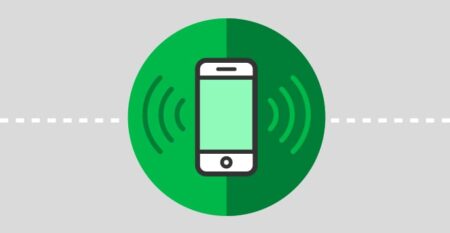How to Prevent IM from Slowing Down Remote Work Productivity
Instant messaging is an essential business tool, but organizations should follow these best practices to ensure it doesn’t slow down employee productivity.


Pre-pandemic, it wasn’t uncommon for employees sitting right next to each other to IM instead of speaking. Personal apps and social media have been firmly entrenched in the workplace for years, delivering both advantages and disadvantages to organizations.
In the COVID-19 world of remote work, however, it’s more important than ever to set clear ground rules around non-work-related messaging.
Too many non-work chat messages can be draining
Just before the pandemic sent most office workers home, we asked 2,000 employees at medium-sized and large organizations about how they connect with their colleagues online. What they told us about non-approved apps and social media at work is revealing and useful for organizations trying to navigate the new work-from-home terrain.
Just over half of our respondents said they’re overwhelmed by the number of non-work-related messages sent via apps like Slack and Teams.
The lines between work and home are blurring
The delineation between home and the workplace was already eroding with the rise in remote work before COVID-19. Now it’s disappearing fast – along with the boundaries between personal and professional communication – which can have negative consequences for employee wellbeing and productivity.
IM can be relentless, especially when people don’t have the interruptions of commuting or attending evening activities. The pandemic has amplified the pressure to always be available and responsive.
Employees who have never worked from home may feel they have to prove their commitment by working around-the-clock. Harvard research has shown that people who send after-hours communications underestimate how compelled receivers feel to respond immediately.
On the flip side, remote work has intensified employees’ reliance on IM to stay connected socially with colleagues. While this is a positive thing in moderation, it can quickly go wrong, as you’ll see from the survey results below.
IM in the modern workplace, the pros, and cons
If the pandemic had happened before the explosion of communication and collaboration tools that enable remote work, organizations would have been faced with insurmountable obstacles.
The business world depends on IM to empower an increasingly dispersed workforce with escalating expectations of flexibility. The COVID-19 business world could not operate without it.
The benefits of IM in the workplace are well-known, from efficient communication of quick information to immediate employee feedback. Yet this ease of connection can be a slippery slope.
Our survey found an alarming 39 percent of respondents had regretted sending a message to a colleague. From love notes to private company data, they mistakenly shared sensitive content with the wrong people.
Other pitfalls of unapproved IM and social media that are especially relevant for large remote workforces include:
- Noise from overuse of IM
- Communication silos when different groups are using different messaging apps
- Inefficient knowledge capture and management
The task for today’s organizations is to find a balance between maximizing the benefits of IM and minimizing the distractions.
3 best practices for getting the most from IM

1. Encourage (appropriate) informal communication
It would be impractical and ill-advised to try to eliminate non-work-related IM. Work relationships that extend into the personal sphere are vital for engagement and a thriving corporate culture. Gallup research found just 30 percent of employees have a best friend at work, but those who do are seven times as likely to be engaged in their jobs.[/vc_column_text][/vc_column][/vc_row][vc_row][vc_column][vc_column_text]While you can’t expect everyone to have a BFF in the office, cultivating employee social connections is crucial for your bottom line.
A 2020 Cigna poll of more than 10,000 Americans found three in five consider themselves lonely, and lonely workers are less engaged, less productive, and less likely to stay in their jobs. Ensure your employees feel connected to their colleagues and the organization by giving them space for social interaction on your intranet.
And instead of banning or rigidly monitoring non-approved messaging apps, consider embedding your employees’ favorite IM tools in your intranet. By giving them a secure, IT-approved home, you can formalize the etiquette, capture the business-critical knowledge, and keep the conversations going.

2. Set IM boundaries for work-life balance
Burnout is as big a potential problem as distraction for remote workers. Research has shown that just the expectation of off-hours availability increases strain on workers and their families.
Leaders should set the tone by signing off their IM tools at certain times of day, signaling to employees that it’s okay to go offline when their work is done, or they need a mental health break.
Publish guidelines for remote work communications in your digital workplace – including how and when IM should be used – so everyone’s on the same page.

3. Be transparent about monitoring
Monitoring of employee activities is a sensitive subject and the source of great debate. If this is something your organization does, to avoid the unpleasant or downright harmful results of careless messaging, let your employees know their messages on specific platforms will be watched. But don’t forget to explain why – that will make all the difference in their reaction.
According to Gartner, more than half of employers in 2019 used some type of monitoring technique for employee messages, up from 30 percent in 2015. When companies were transparent about the monitoring, communicated the results, and explained the aim of creating a healthier and happier employee experience, employees were more comfortable with the idea.
With more employees working from home for the foreseeable future, your organization may want to consider formal monitoring. Be upfront about it, be reasonable, and respect relevant privacy laws.
Learn more about today’s digital workplace trends
We recently released our 2020 State of the Digital Workplace Report, which identifies prevailing workplace challenges facing many organizations and offers innovative solutions that focus on digital tools and transformation. Learn about our other key findings on remote work by downloading the full report.






